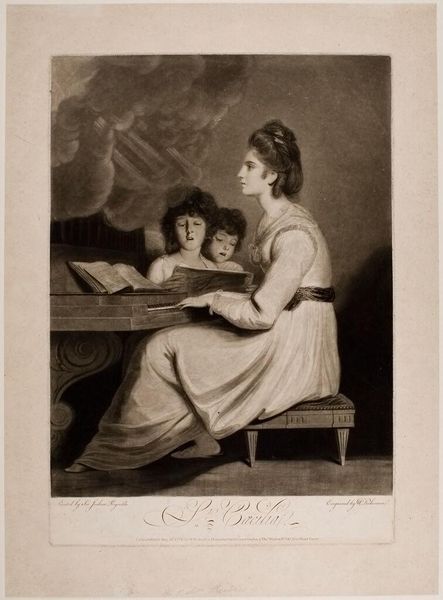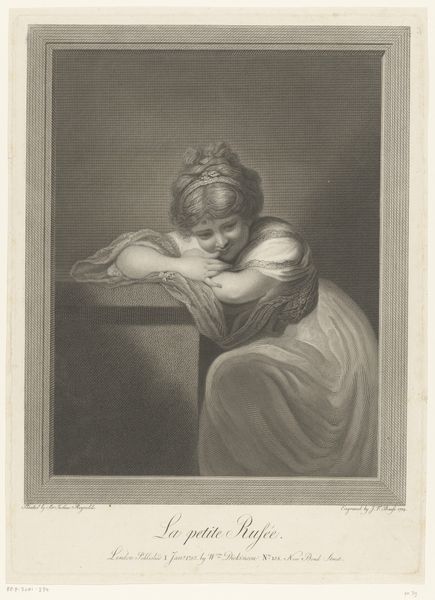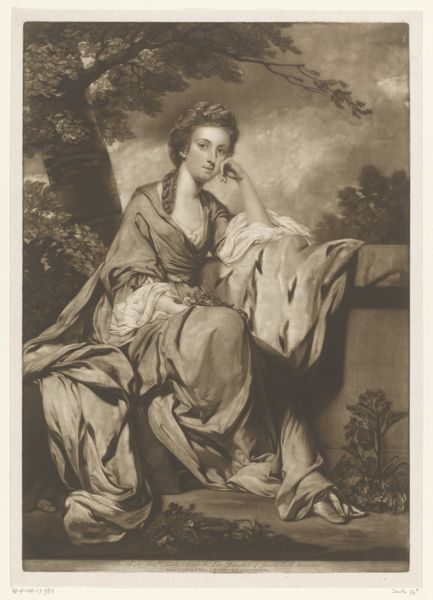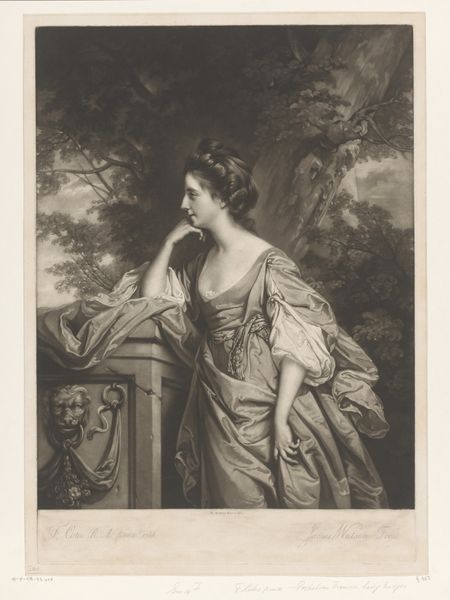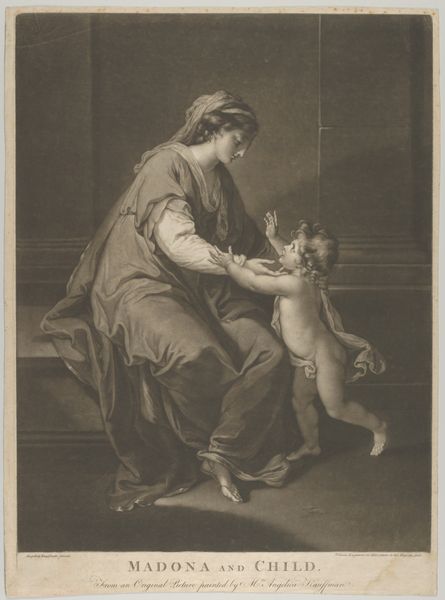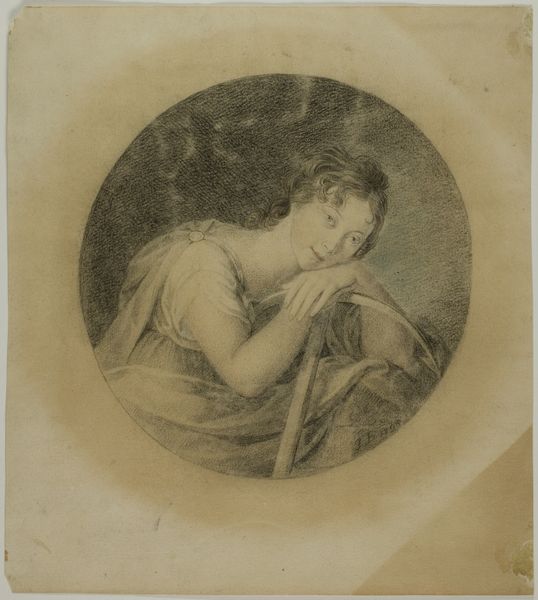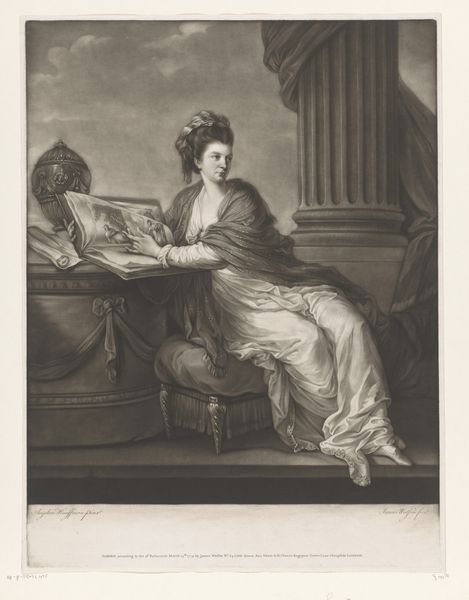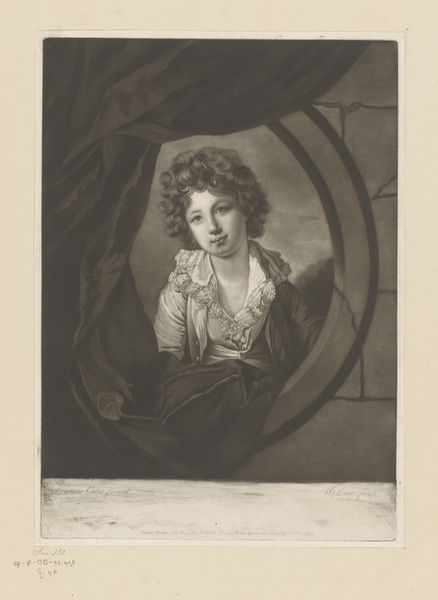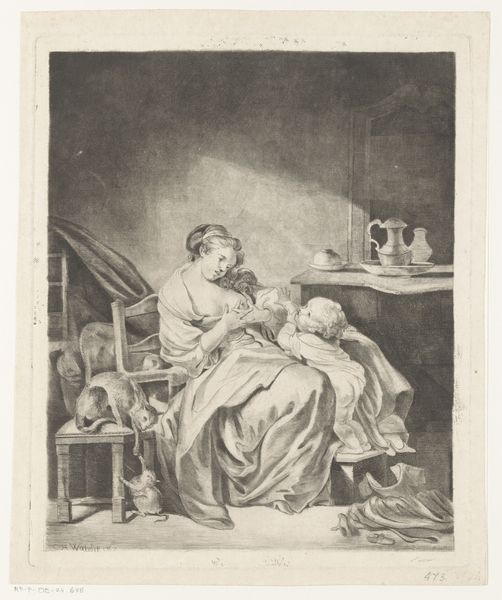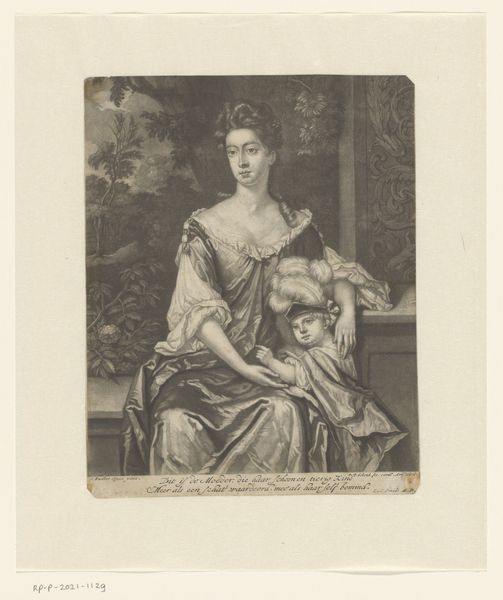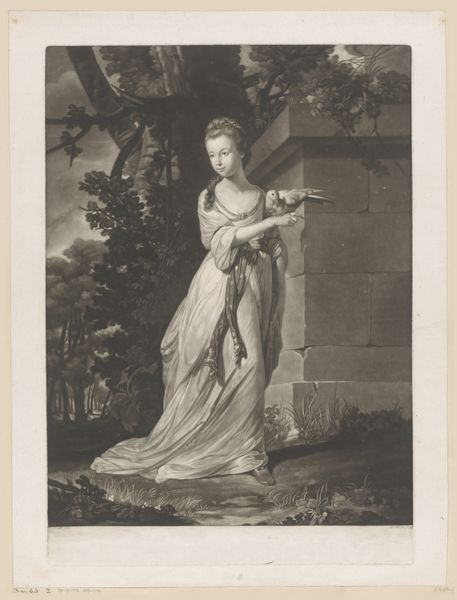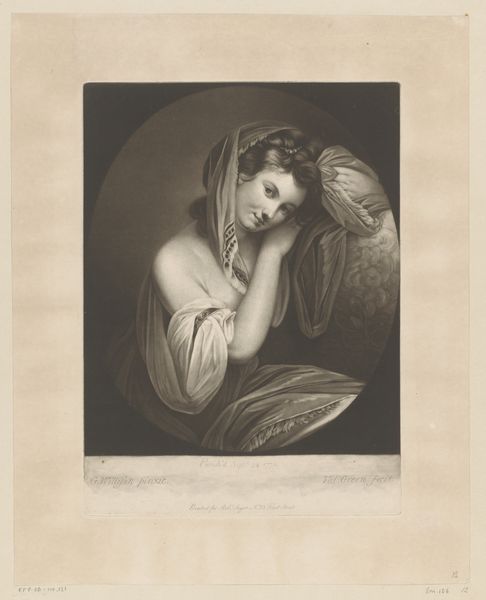
Dimensions: height 503 mm, width 355 mm
Copyright: Rijks Museum: Open Domain
Editor: We're looking at "Portret van Elizabeth Sheridan als de H. Cecilia," likely from 1776, an engraving on paper by William Dickinson. The texture created by the engraving process really stands out, and I'm struck by the almost staged quality of the scene. What do you make of it? Curator: Immediately, I notice the way the engraving foregrounds the materials used. We see the hand of the engraver, Dickinson, making evident the labor in replicating this image for a consumer market. It points to the growth of print culture at the time, doesn’t it? The seemingly straightforward image of a woman and children is actually a product of complex social and economic forces surrounding artistic production and dissemination. Editor: I see what you mean. It makes you think about who this was made for, and who could afford something like this. Curator: Exactly! The choice of engraving itself – its accessibility and relative affordability compared to painting – suggests a desire to reach a broader audience. But then we have to ask, how does that impact its value as art? Was it consumed as easily accessible art, as social commentary, or something else entirely? How does this piece reflect the commodification of image and ideas? Editor: It’s interesting to consider the print as an object in itself, not just as a representation. The choice to depict her as St. Cecilia too… does that connect to ideas about feminine artistry being somehow elevated or deified? Curator: It's certainly possible. That could be tied into prevailing social attitudes towards women, their roles within the household, but also how their talents contributed to the broader culture and marketplace of art. The material suggests that a copy of a depiction, while not quite an original, did hold worth for a number of contemporary consumers. What are the means by which something obtains and expresses "value?" Editor: I hadn't thought about this piece in terms of production and consumption. Looking at art this way opens up so many more questions. Curator: Absolutely. And by asking those questions, we engage more critically with the artwork and the society that created it.
Comments
No comments
Be the first to comment and join the conversation on the ultimate creative platform.
